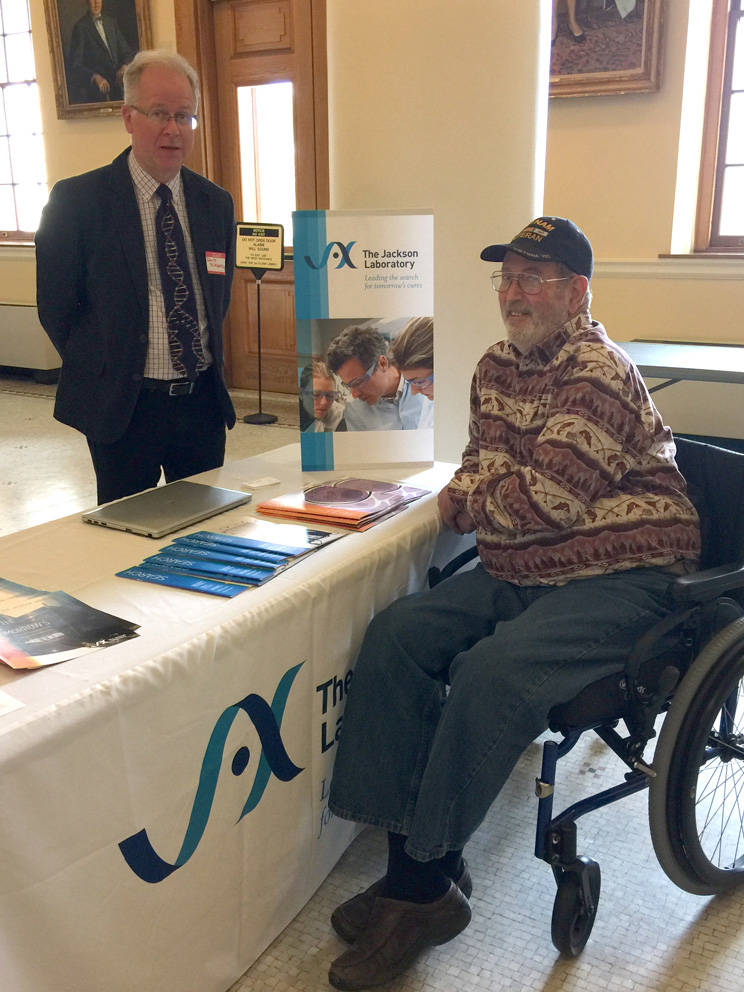
Researchers from The Jackson Laboratory (JAX) attended an official Rare Disease Day event February 29, 2016 at the Maine State House in Augusta. The JAX team was on hand to help educate state legislators and staff about the challenges of living with rare diseases, and how JAX is empowering the scientific and medical communities to combat these diseases.
By definition, a rare and orphan disease is one that affects fewer than 200,000 individuals in the United States. Because of the small population afflicted by any one illness, funding to investigate causes and treatments tends to be limited, slowing the discovery of potential therapies. Yet with over 7,000 recognized rare diseases, an estimated 350 million people worldwide are affected at any given time.
Through its Rare and Orphan Disease Center, JAX works closely with foundations and scientists from around the world to facilitate research into treatments of rare and orphan diseases. JAX scientists genetically engineer new mouse models, which often harbor patients' gene mutations, to be used for testing new targeted therapeutics.
"The biggest problem of rare disorders is that drug companies do not invest in solving these disorders even though the disease outcomes are so devastating," says JAX CEO Edison T. Liu, M.D. "By contributing to developing models that can test new therapeutics, we actually serve a community that would be neglected."